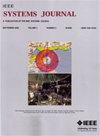通过在线学习优化动态战斗环境下的通信体系结构
IF 4.4
3区 计算机科学
Q1 COMPUTER SCIENCE, INFORMATION SYSTEMS
引用次数: 0
摘要
人工智能、大数据等先进技术的应用,极大地提高了作战系统的智能化水平,加快了作战节奏,在高质量作战通信架构的支持下,需要更高的决策速度。现实中,由于战场基础设施条件较差,作战单位的通信服务通常由通信资源有限的通信单位提供。因此,找出一种有效的方法在大规模作战单位之间共享稀缺的通信资源变得至关重要。然而,由于通信需求的差异性和作战单位位置移动的随机性,即无法提前获取战场环境信息,给作战单位有效构建连接关系和分配通信资源带来了挑战。本文提出了一种基于在线学习(OL)的作战通信体系结构构建方法,通过与战场环境的交互来估计战场环境的当前状态,并根据作战单位的需求和位置动态构建连接关系和分配通信资源,从而实现QoE的最大化。评估结果表明,我们提出的基于ol的方法能够以灵活有效的方式构建战斗通信体系结构,在效率和公平性方面超越现有方法,将总QoE提高到基线方法的两倍。本文章由计算机程序翻译,如有差异,请以英文原文为准。
Optimize Communication Architecture in Dynamic Combat Environment via Online Learning
The application of artificial intelligence, Big Data, and other advanced technologies has dramatically improved the intelligence level of the combat system-of-systems and accelerated the combat rhythm, which requires higher decision speed in the support of high-quality combat communication architecture. In reality, due to the poor infrastructure conditions on the battlefield, the communication services of the combat units are usually provided by the communication units with limited communication resources. Thus, figuring out an efficient method to share the scarce communication resources among massive combat units becomes crucial. However, it is challenging to efficiently construct the connection relationship and allocate communication resources to the operational units because of the differences in communication requirements and the randomness of location movement of combat units, i.e., unable to obtain battlefield environmental information in advance. In this article, we propose an online learning (OL)-based combat communication architecture construction method, which can estimate the current state of the battlefield environment by interacting with it and dynamically construct connection relationships and allocating communication resources according to the needs and locations of operational units, so as to maximize the QoE. The evaluation results demonstrate that our proposed OL-based approach is capable of constructing the combat communication architecture in a flexible and efficient manner, surpassing existing methods in terms of efficiency and fairness by significantly enhancing the total QoE up to twice as much compared to baseline methods.
求助全文
通过发布文献求助,成功后即可免费获取论文全文。
去求助
来源期刊

IEEE Systems Journal
工程技术-电信学
CiteScore
9.80
自引率
6.80%
发文量
572
审稿时长
4.9 months
期刊介绍:
This publication provides a systems-level, focused forum for application-oriented manuscripts that address complex systems and system-of-systems of national and global significance. It intends to encourage and facilitate cooperation and interaction among IEEE Societies with systems-level and systems engineering interest, and to attract non-IEEE contributors and readers from around the globe. Our IEEE Systems Council job is to address issues in new ways that are not solvable in the domains of the existing IEEE or other societies or global organizations. These problems do not fit within traditional hierarchical boundaries. For example, disaster response such as that triggered by Hurricane Katrina, tsunamis, or current volcanic eruptions is not solvable by pure engineering solutions. We need to think about changing and enlarging the paradigm to include systems issues.
 求助内容:
求助内容: 应助结果提醒方式:
应助结果提醒方式:


